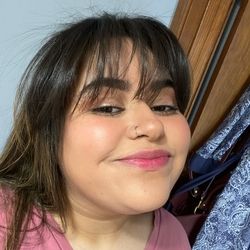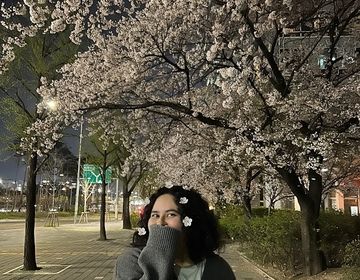Hagwon Hustle: Teaching at a Private School in South Korea
If you have been thinking about teaching English in South Korea, then you have probably heard the terms private school, hagwon, EPIK, and public school thrown around.
It can definitely be overwhelming, but making the decision on where to work can determine how you make the most of your experience as a teacher in South Korea.
Similar to the United States, public schools in South Korea are just that. They are usually divided by elementary, middle, and high school, with some middle and high schools combined into one bigger secondary school.
Private schools, on the other hand, are treated like extra curricular academies that students usually attend after their day at public school ends. Private academies, or hagwons in Korean, range from a variety of activities, including art, math, science, dance, jump roping, and of course, English (Yes, you read that correctly. There are jump roping hagwons in Korea).
Most hagwons cater to elementary, middle, and high school kids, as their academy classes begin around 2-2:30PM and end around 10-10:30PM (sometimes later). However, there are some hagwons that provide kindergarten education for children between the ages of 5-7 years old Korean age (3-6 years old international age) during the morning time. There are also some hagwons that start with admitting students from kindergarten age and keep them enrolled at the hagwon until they finish high school. So, you might find yourself teaching middle school one period, high school the next, and first grade in the last period.
Most English teachers that work at a private school have a schedule from 1:00 \PM to 8:00PM. However, if they teach kindergarten, then they usually have a basic 9-5 or 9-6 schedule. For me, I start work at 9:40 AM, though I am usually in the teacher’s room by 9:00 AM. This gives me time to meet with my co-teacher and print out any materials I may need for my kindergarten lesson that day. After that, I will set up my classroom for the day and wait for my students to come in. Class begins around 9:40 AM, with students completing their morning work. Then it is off to the library to check out books and do independent reading time from 9:50 to 10:15 AM. Then, we go back to the classroom to begin our daily lesson. Since I teach two kindergarten classes, I will teach one class for 1st period and then switch classes with my co-teacher after snack time, around 11:10 AM.
Classes are expected to be finished by 12:25 PM. After classes are finished, the students get to have their lunch time. Most schools provide lunch to their kindergarten teachers, while some might charge a small meal plan fee that is deducted from your monthly salary. Other schools will allow for their teachers to go out for lunch or go home during lunch time, while other schools assign teachers to lunch time. This basically means the teacher has to stay with their class during lunch time, but it also means you should help them get ready to eat lunch by having them wash their hands, grab their chopsticks/spoons, and place their water bottles on their desks. Once this is done, you will serve them lunch and spend the next 40 minutes to an hour eating lunch with them. I usually play Disney songs during lunch time in order to limit the talking and playing during lunch time. After lunch is over, you will help them clean up by making a food waste container and wiping down their desks with wet wipes or a cleaning towel. I usually eat lunch with one of my classes everyday, except for Wednesday, which is when my director holds our weekly FT (foreigner teacher) meetings.
After lunch, the kindergarten classes will have their elective classes, which can be art, science, musical, gym, or reading. Once their elective classes are done, the kids will pack up their things and line up to walk down to the bus with a helper teacher. At my school, kindergarten classes end at 2:30 and the first afternoon class starts at 2:45.
Unlike public schools, most private academies in South Korea also have a preset curriculum that teachers are expected to follow. Depending on what school you are at, you might have more or less freedom with the curriculum. Most of the time, I usually follow the curriculum that is set out for me. However, I do have the freedom to decide how many pages we do in each workbook everyday. There are also times when I use supplemental worksheets and materials to help the kids increase their levels of comprehension. Most of the time, either you or your co-teacher will create a schedule or syllabus that details the textbooks used, the pages for the classwork and the pages they assigned for homework. Both you and your students will get a copy of the syllabus to ensure everybody is aware of the upcoming assignments.

The levels you teach will determine what material you will teach. For example, my elementary school classes are focused on speaking, reading comprehension, and writing. When I taught middle school, my classes were more focused on grammar structure, speaking, and listening. I have only ever taught one high school class before and it was mainly focused on how to take the TOSEL/TOEFL tests and how to take the English portion of the Korean SATs or suneung.
One of the most common questions I’ve gotten is about my break times/desk warming. Because I teach both kindergarten and after school, my school tries to give me a lot of breaks and time to prepare in between classes.
Currently my schedule looks like this:
Monday: I teach kindergarten from 9:40 AM to 1:10 PM then I have a three hour break from 1:10 PM to 4:15 PM. Then I teach one third grade class from 4:20 PM to 5:05 PM. That’s technically my last class of the day, but I have the last period (5:05 PM to 5:50 PM) of prep time/desk warming.
Tuesday: I teach kindergarten from 9:40 AM to 11:10 AM. I then get a small break until 12:30 PM. Then I teach from 12:30 PM to 2:30 PM. Tuesdays and Thursdays have the same afternoon schedule. I have two second grade classes from 2:45 PM to 4:15 PM. Then I teach a beginners phonics class for 6 and 7 year olds that do not attend English kindergarten, but instead come directly from Korean kindergarten or daycare. This class is my last class of the day. After that, I have one planning period and I am done at 5:50PM.
W/TH/F Kindergarten: This schedule is the same everyday for Kindergarten. I teach all the way through from 9:40 AM to 1:10 PM with a small break from 1:10 PM to 2:30 PM.
W/F Afternoon: I still teach my third grade class from Monday but instead of teaching them for one period, I teach them for two periods. So, their class with me is from 4:20 PM to 5:50 PM on Wednesday and Fridays.

How are we feeling everybody? Excited? Scared? Nervous? Overwhelmed? If you made it this far, I know it can be a bit of an information overload. But, don’t worry! Once you are working and in the swing of things, it feels like second nature.
Every school is also different in terms of their curriculum, scheduling, and activities/events they do outside of teaching. If you are looking for something super specific, I would recommend talking with your recruiter about the preferences you have in order to find the best fit for you!
Related Posts
A Comprehensive Budgeting Guide for English Teachers in South Korea
A Comprehensive Budgeting Guide for English Teachers in South Korea Teaching English in South Korea has become an increasingly popular option for young people looking to travel and get some... keep reading
Professionalism in South Korea as a Native English Teacher
As a native English teacher in South Korea, understanding Korean culture and professionalism is crucial for both personal success and the broader impact you can have on your students. South... keep reading
How to Go to the Doctor in South Korea as an English Teacher: A Guide to Healthcare and Health Insurance
As an English teacher in South Korea, maintaining good health is essential while living abroad. Navigating the healthcare system can seem daunting and stressful at first, especially if you can’t... keep reading



